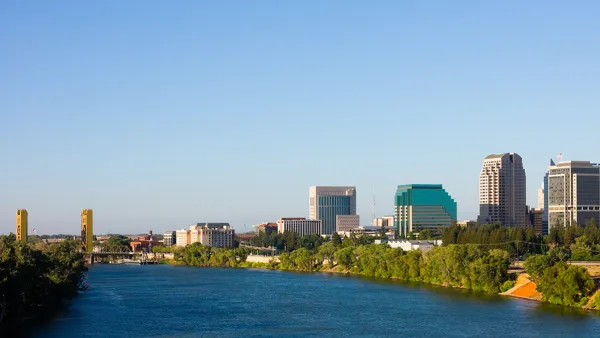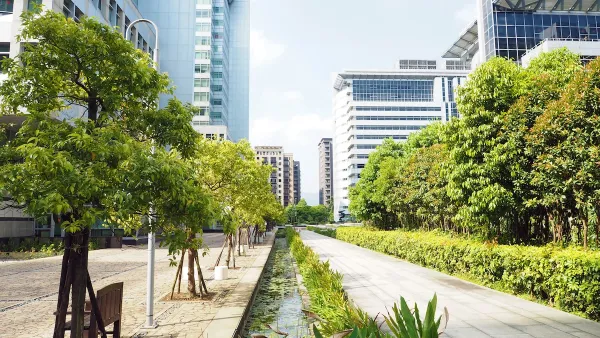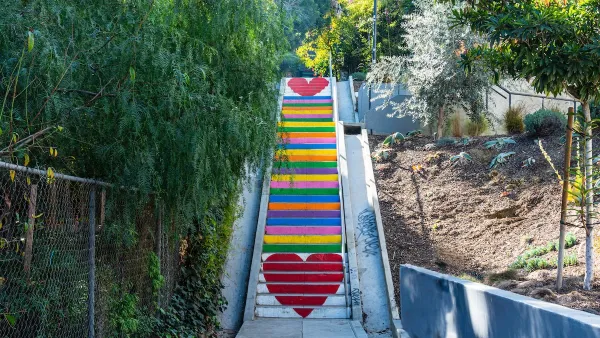According to this study, existing "leafy infrastructure" in ten of the world's largest cities confers an estimated $505 million in benefits. Planting more could magnify the effect.

Jessica Leigh Hester covers a study that puts a dollar value on the positive effects of urban forests. "A team of researchers led by Theodore Endreny of SUNY's College of Environmental Studies and Forestry sought to quantify how leafy infrastructure pays dividends in 10 chock-full cities—and the extent to which the benefits could compound if those areas went greener."
"Many of trees' benevolent effects are general and constant: They help mitigate the heat-island effect, for example, and curb pollution. But the more specific benefits dispersed by trees vary from place to place." Stormwater remediation, for example, doesn't account for much in dry Cairo.
Across the 10 megacities, the study estimates an average of $505 million is saved annually. Lower air pollution makes up the bulk of these savings.
- $482 million per year in decreased air pollution (predominantly from smaller particulate matter, a byproduct of combustion and diesel engines)
- A benefit of $11 million annually through improved stormwater remediation
- A half-million saved in heating and cooling costs
- $8 million in C02 sequestration
FULL STORY: How Much Are Trees Worth to Megacities?

National Parks Layoffs Will Cause Communities to Lose Billions
Thousands of essential park workers were laid off this week, just before the busy spring break season.

Retro-silient?: America’s First “Eco-burb,” The Woodlands Turns 50
A master-planned community north of Houston offers lessons on green infrastructure and resilient design, but falls short of its founder’s lofty affordability and walkability goals.

Delivering for America Plan Will Downgrade Mail Service in at Least 49.5 Percent of Zip Codes
Republican and Democrat lawmakers criticize the plan for its disproportionate negative impact on rural communities.

Test News Post 1
This is a summary

Test News Headline 46
Test for the image on the front page.

Balancing Bombs and Butterflies: How the National Guard Protects a Rare Species
The National Guard at Fort Indiantown Gap uses GIS technology and land management strategies to balance military training with conservation efforts, ensuring the survival of the rare eastern regal fritillary butterfly.
Urban Design for Planners 1: Software Tools
This six-course series explores essential urban design concepts using open source software and equips planners with the tools they need to participate fully in the urban design process.
Planning for Universal Design
Learn the tools for implementing Universal Design in planning regulations.
EMC Planning Group, Inc.
Planetizen
Planetizen
Mpact (formerly Rail~Volution)
Great Falls Development Authority, Inc.
HUDs Office of Policy Development and Research
NYU Wagner Graduate School of Public Service





























